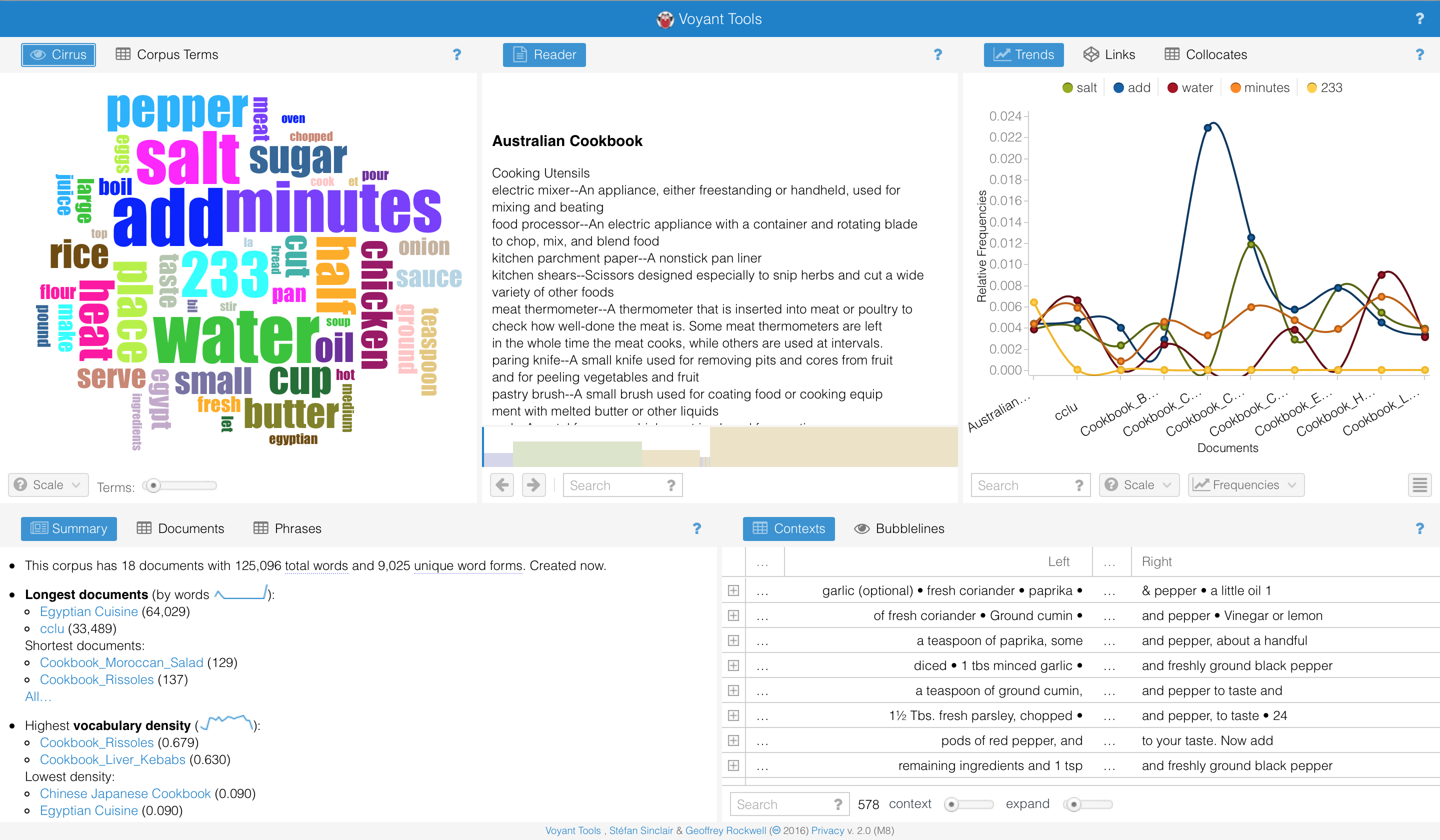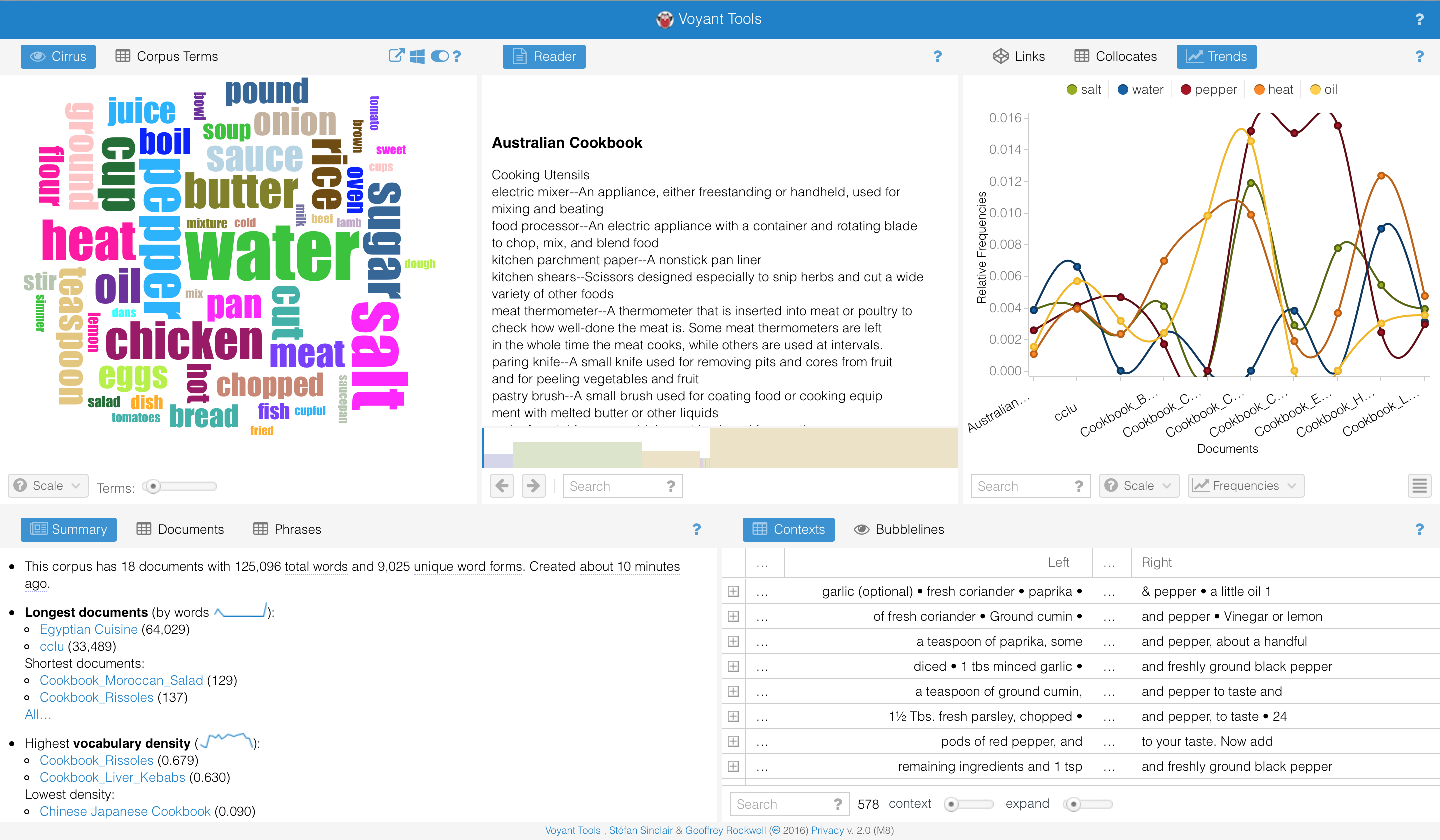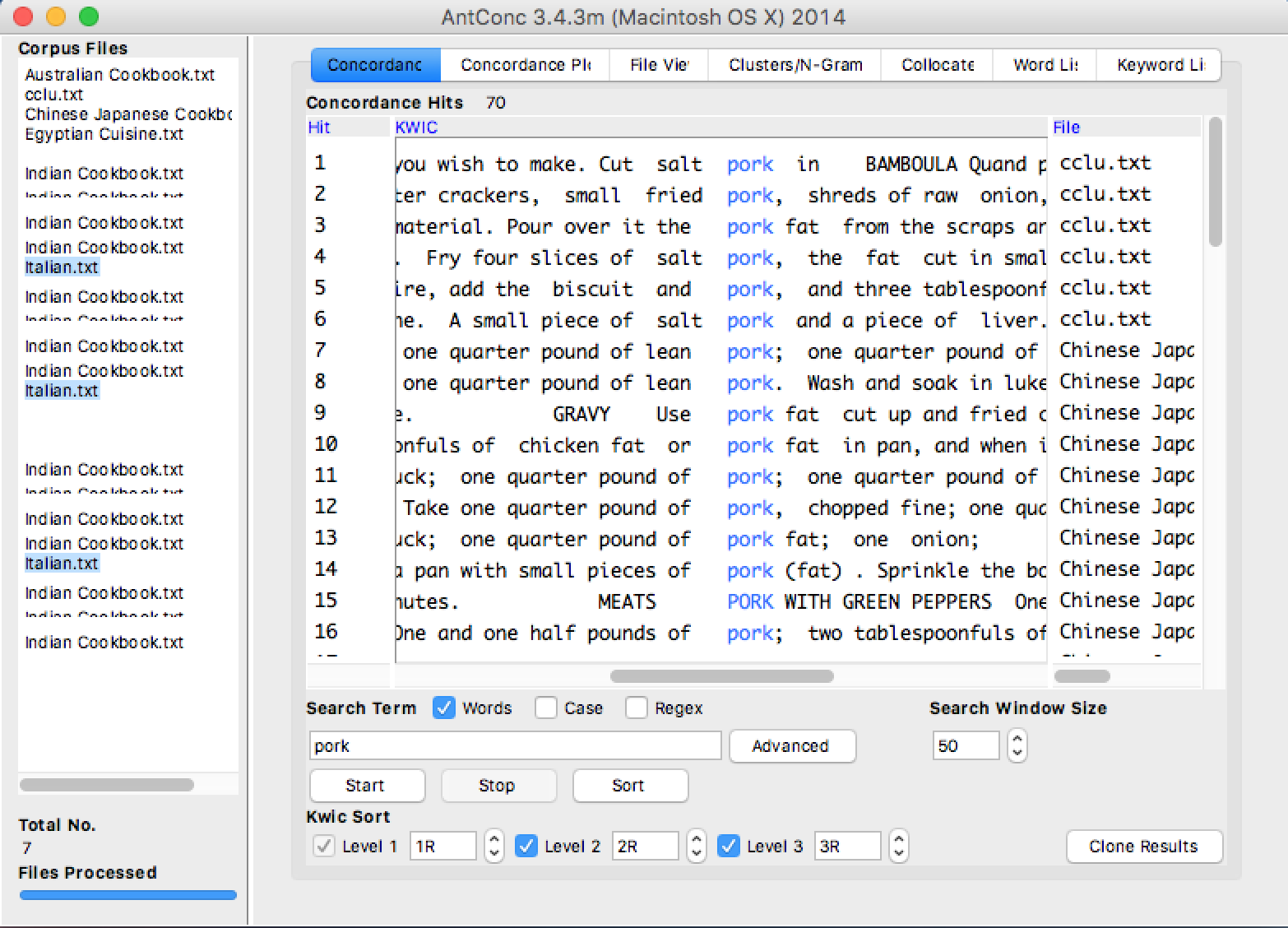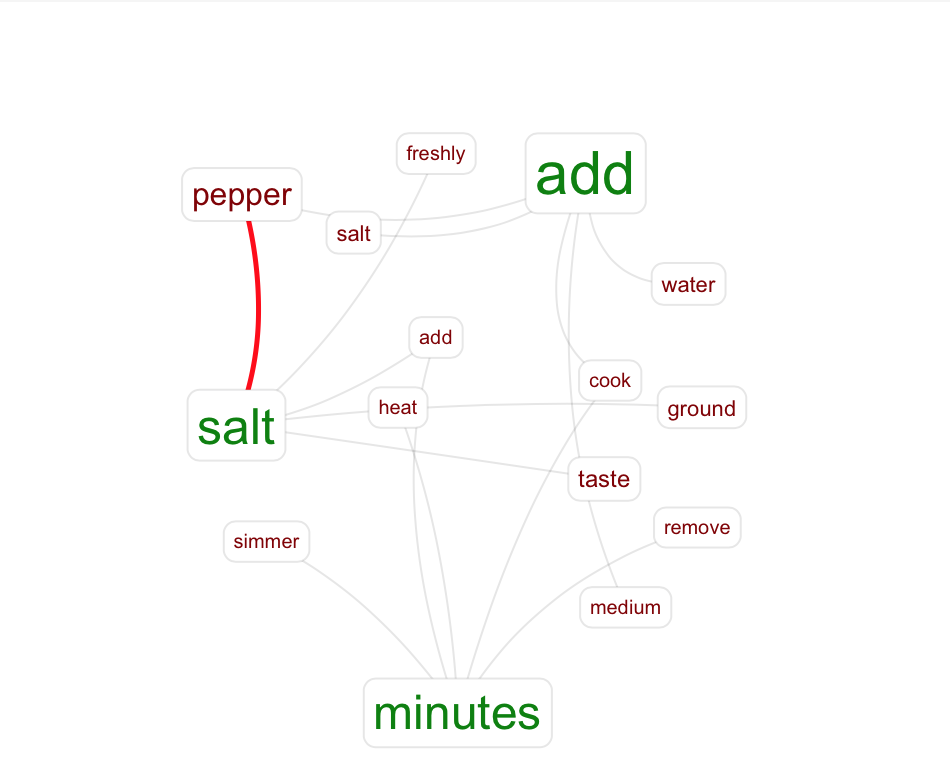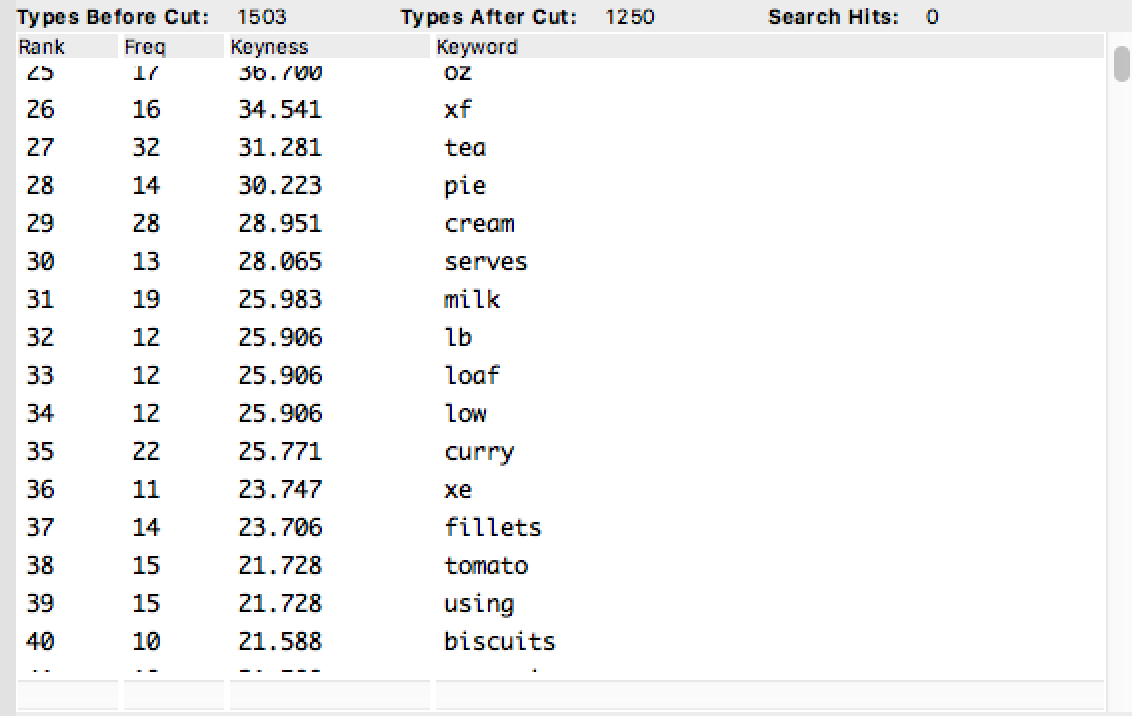My Motivations
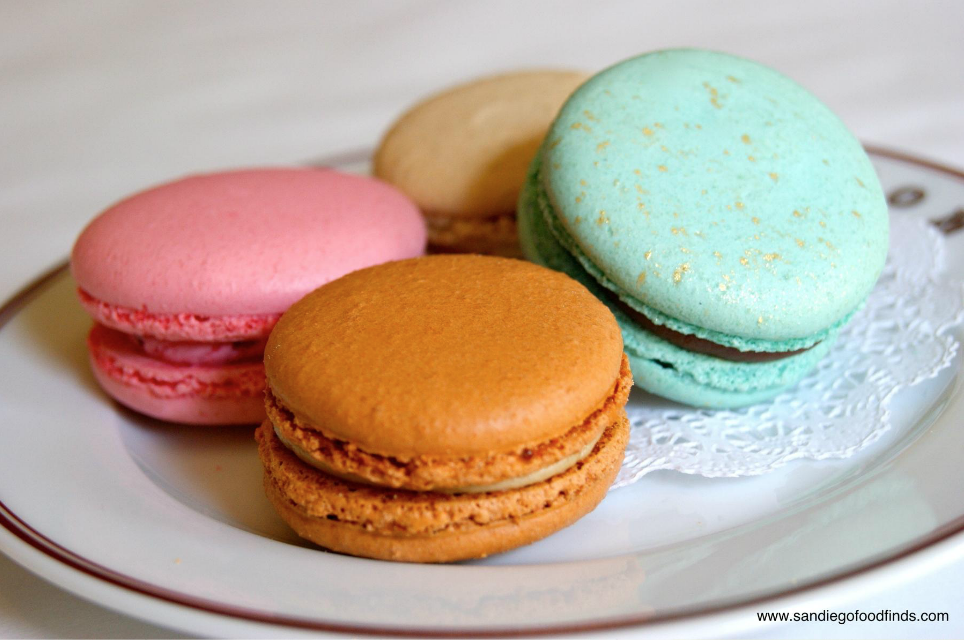
I have always been a huge fan of food. I love trying cuisines from different cultures. It is amazing that different cultures have created so many ways to cook one specific ingredient. Driven by the love of food, I decided to do an analysis on recipes from different cultures.
My Research Questions
- What different cooking techniques different cultures prefer to use?
- Do ingredients vary depend on different cultures?
- Is there a kind of spice that people from a culture love to use?
Having these research questions in mind, I went on to collect cookbooks of different cultures and create my corpus.
My Corpus
When I was searching for cookbooks that I was interested in, I kept in mind that I needed to find cookbooks from cultures that are representative and diverse.
My corpus contained these texts:
- French cuisines cookbook
- Chinese and Japanese cuisines cookbook
- Egyptian cuisines cookbook
- Australian cuisines cookbook
- Indian cuisines cookbook
- Italian cuisines cookbook
The reasons why I picked French, Chinese, Japanese, and Italian cuisines cookbooks were because these cultures have always been known to be amazingly good at cooking. Also, these cultures are very representative among all the countries in their region. They also share one common characteristic which is they all have long histories. Longer histories can lead to more mature and unique cooking techniques.
The reasons why I picked Egyptian cuisines cookbook was Egypt has always been well known for its history and its pyramids. I thought it would also be interesting to find out how people in Egypt cook.
The reasons why I picked Australian cuisines cookbook was Australia is a country that is far separated from all the other countries. They have some ingredients that other countries don’t have. My grandfather traveled to Australia nine years ago and he told me that kangaroos in Australia were way overpopulated, Australian had to eat them to slow down the growth of kangaroos’ population. I was curious if I could actually find kangaroo as one of the ingredients in the Australian cuisines cookbook.
The reasons why I picked Indian cuisines cookbook was India has a unique religion. I wanted to see if religion has any impacts on how people cook.
Modifying Corpus
All the corpus I collected were in .pdf format except the Chinese and Japanese cuisines cookbook I got from Prof. Faull was in .txt format. Unfortunately, most of the tools I used for text analysis purpose only supported .txt format. I had to convert all the .pdf files I collected. Since cookbooks usually contain images of dishes, some strange characters appeared in the text files after they were converted. These strange characters really affected the results generated by text analysis tools.
There were also many terms that were not related to the research questions such as “add”, “place”, “heat”, etc. I had to take them out when I was trying to generate a informative word cloud.
In general, cleaning my corpus was such a tedious process.
Voyant
After finally having a nice collection of cookbooks, I first used Voyant to analyze the cookbooks. I mainly used two tools: word cloud and bubblelines.

This is the word cloud generated by Voyant for the whole corpus. From this word cloud, it’s easy to tell chicken is the most popular protein source for all cultures I picked. Onion is a popular kind of vegetable among all the cultures I picked. Salt and pepper are the spices used most often.

This is the bubblines graph generated by Voyant. I searched for “pork”, “chicken”, “butter”, “pepper”, “fish”, and “curry” in this corpus in order to see how often these ingredients are used in different cultures’ cookbooks. It is surprising to see that people from Australia and India do not eat pork very often.
Voyant is an ideal tool to display my corpus in a fancy and colorful way.
Antconc
Next, I moved onto using Antconc to do further analysis on my corpus. I mainly used keyword-in-context searching tool and corpus comparing tool.
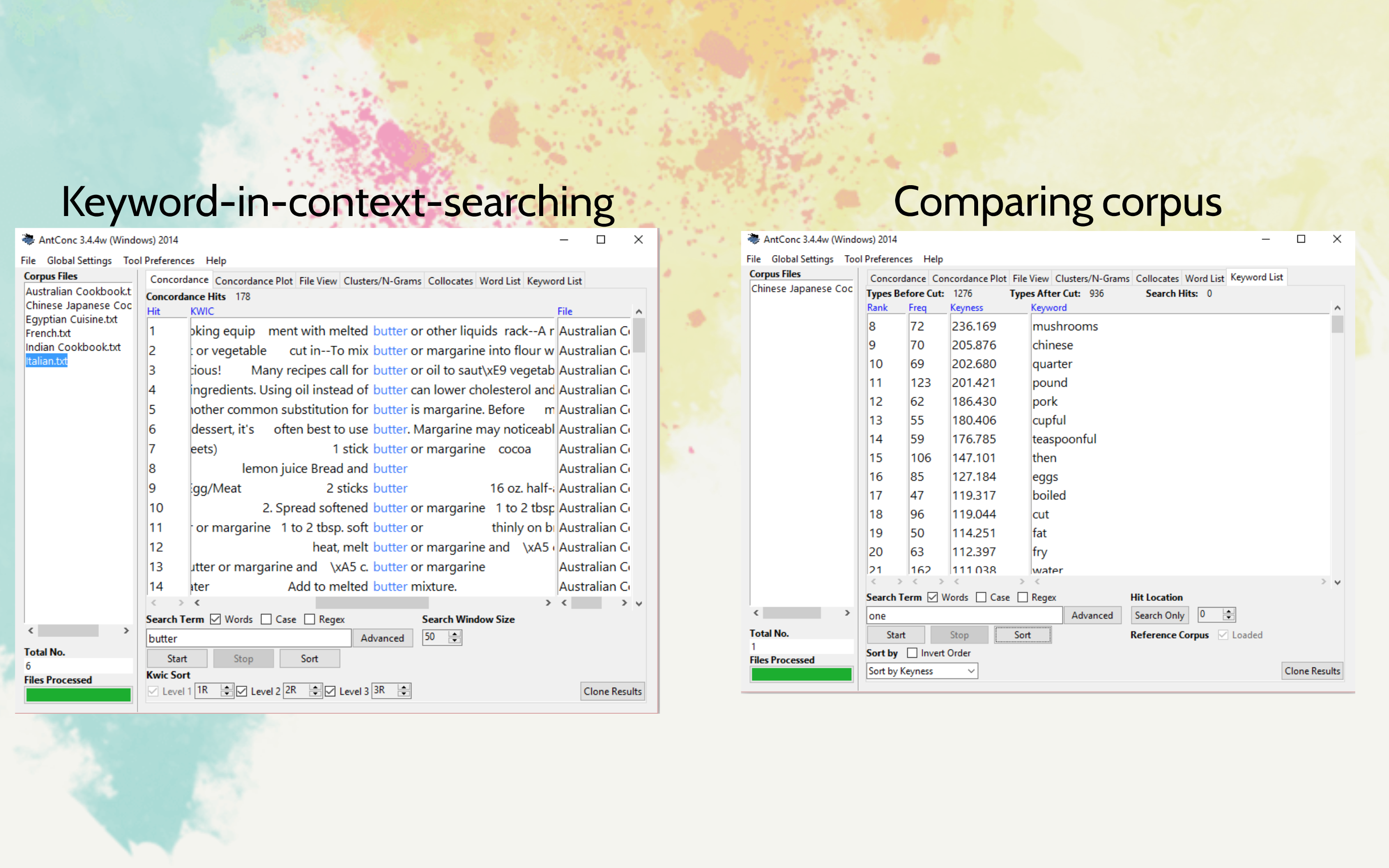
I searched for “butter” in all corpus in order to see the contexts around butter so that I can see how people use butter and what people cook with butter.
I used corpus comparing tool to compare Chinese and Japanese cuisines cookbook with Egyptian cuisines cookbook. The results showed me that Chinese and Japanese eat much more mushrooms than Egyptian people do.
Antconc showed me some very useful information regarding the relationship and differences between cultures.
Jigsaw
I was very happy when I moved onto using Jigsaw. Finally, a tool supports .pdf format. I didn’t have to do any clean up or converting when I used Jigsaw. Jigsaw allowed me to create my own entity list which was very helpful for me since I was looking for certain ingredients in the text. Thus I created a file that contained a list of ingredients that are more frequently used based on the word clouds generated by Voyant.
I used list tool which served a similar goal as Bubblines in Voyant. List showed me if a certain ingredient appeared in specific cultures’ cookbooks.

I found out that Australian people don’t cook pork or mushrooms very often.
Then I used graph tool to figure out the dishes people cook using certain ingredients.
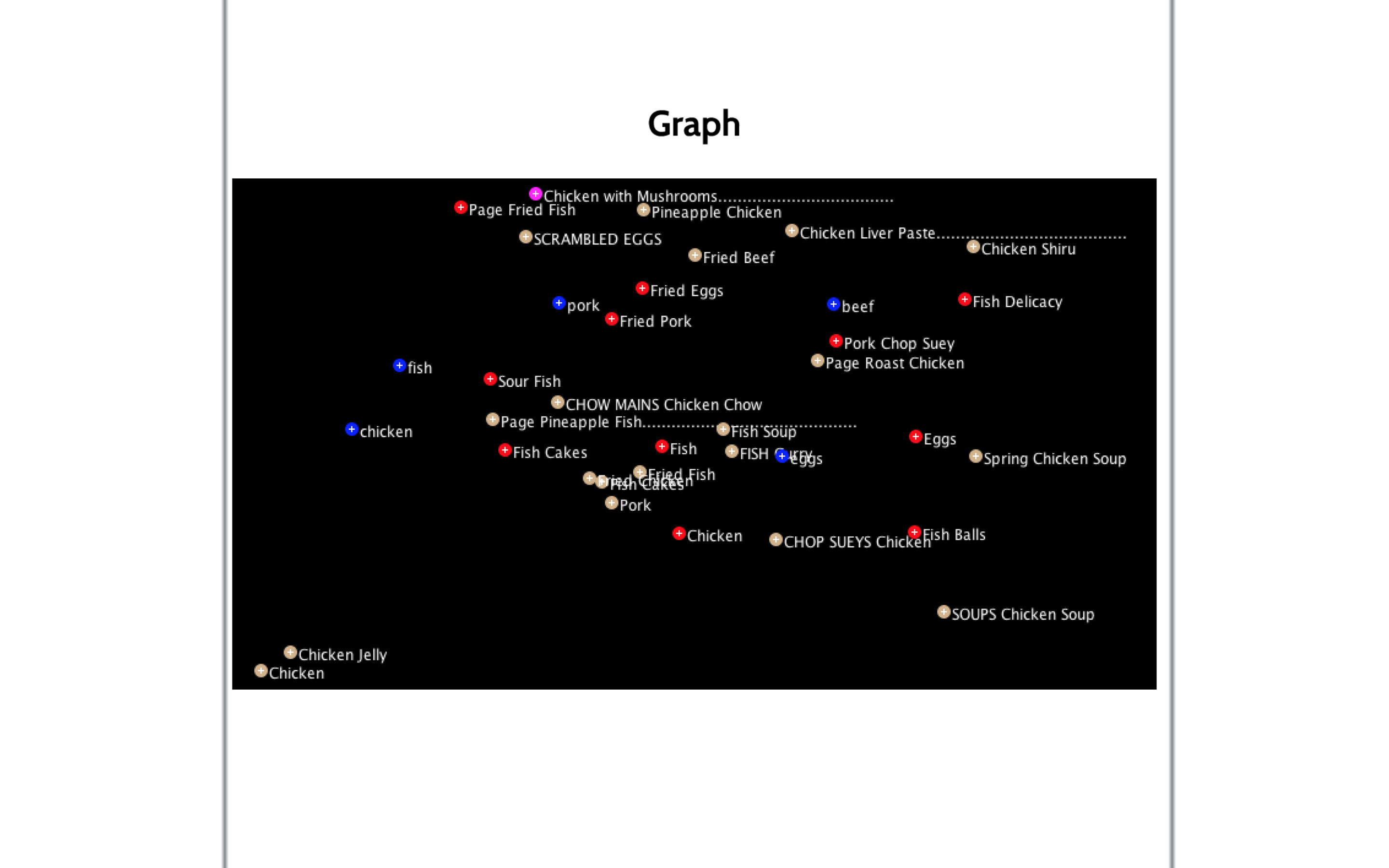
It was fascinating that Jigsaw was able to generate such detailed information.
Reflections on the Results
The results were surprising and informative. I was expecting to see kangaroo but I didn’t see any recipes use kangaroos. I wasn’t expecting to see Australian people cook mushrooms seldom. In general, I was quite satisfied with all the results.
Nevertheless, I also realized that the results could be biased. There are several factors that can cause these bias:
- The cookbooks I collected might be written in different years.
- The cultures I selected are representative, but the cookbooks might be too short to be representative.
- The cookbooks might be translated and the translators might misunderstand the original author.
- The recipes might be adjusted according to where the cookbooks were published.
- The size of my corpus might not be large enough.
Talking about the analysis tools, there is no such thing as the best tool among all of them. It is a better idea to use them together and make them cooperate.
My Future Research
- I plan to further clean my corpus so that I can get more accurate results.
- I will expand my corpus. I will not only select more representative cultures but also collect more cookbooks for each culture at the same time.
- I will try to seek for more new and interesting relationships between cultures and within cultures.
- I will try to establish connections between food and other elements of each culture.
